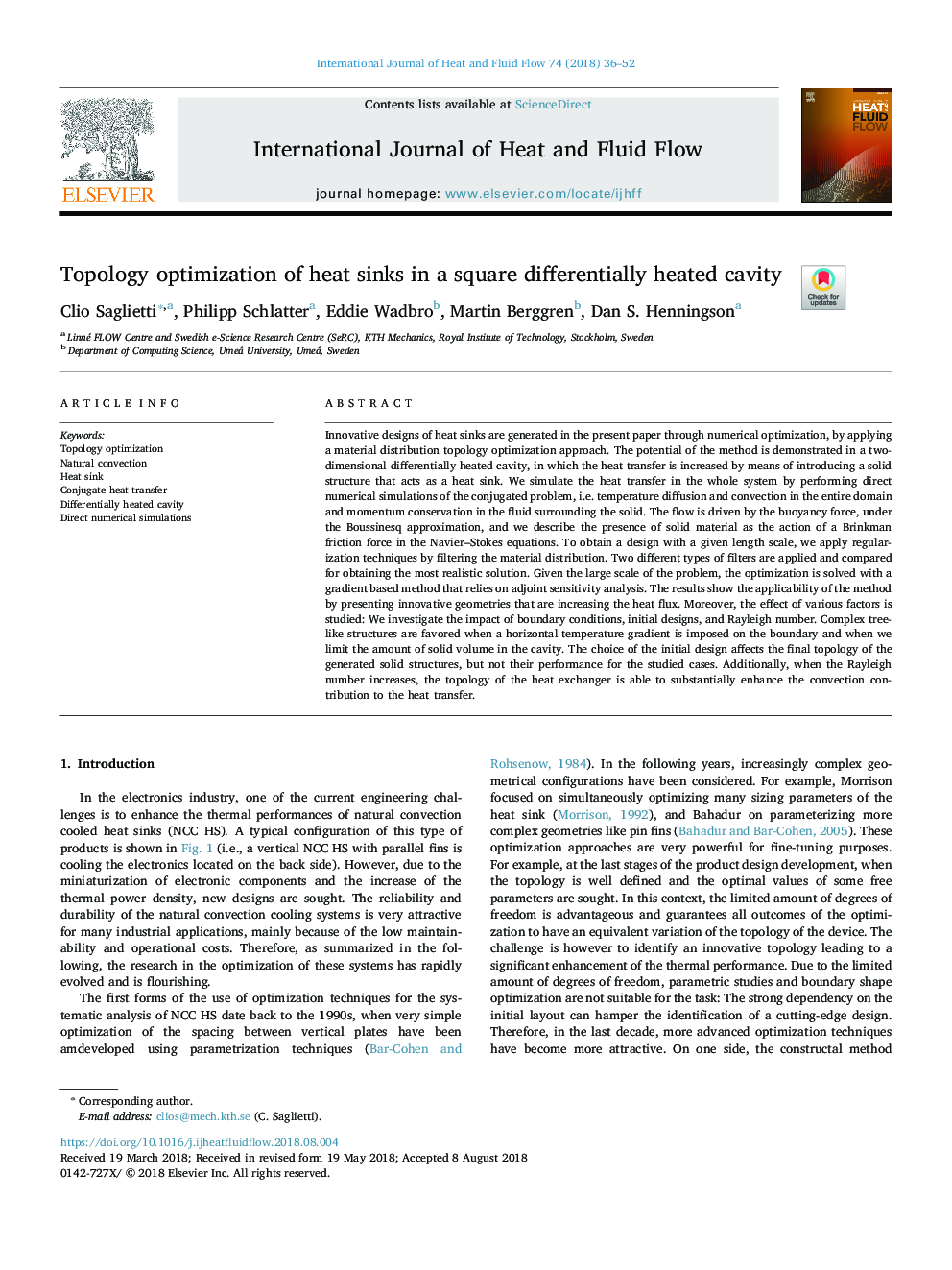| کد مقاله | کد نشریه | سال انتشار | مقاله انگلیسی | نسخه تمام متن |
|---|---|---|---|---|
| 10226144 | 1701252 | 2018 | 17 صفحه PDF | دانلود رایگان |
عنوان انگلیسی مقاله ISI
Topology optimization of heat sinks in a square differentially heated cavity
ترجمه فارسی عنوان
بهینه سازی توپولوژی غوطه ور های گرما در یک حفره دیفرانسیل متمایز مربعی
دانلود مقاله + سفارش ترجمه
دانلود مقاله ISI انگلیسی
رایگان برای ایرانیان
کلمات کلیدی
بهینه سازی توپولوژی، پودر طبیعی سینک حرارتی، انتقال حرارت متصل، دیافراگم گرمایی متفاوت است شبیه سازی عددی مستقیم،
موضوعات مرتبط
مهندسی و علوم پایه
مهندسی شیمی
جریان سیال و فرایندهای انتقال
چکیده انگلیسی
Innovative designs of heat sinks are generated in the present paper through numerical optimization, by applying a material distribution topology optimization approach. The potential of the method is demonstrated in a two-dimensional differentially heated cavity, in which the heat transfer is increased by means of introducing a solid structure that acts as a heat sink. We simulate the heat transfer in the whole system by performing direct numerical simulations of the conjugated problem, i.e. temperature diffusion and convection in the entire domain and momentum conservation in the fluid surrounding the solid. The flow is driven by the buoyancy force, under the Boussinesq approximation, and we describe the presence of solid material as the action of a Brinkman friction force in the Navier-Stokes equations. To obtain a design with a given length scale, we apply regularization techniques by filtering the material distribution. Two different types of filters are applied and compared for obtaining the most realistic solution. Given the large scale of the problem, the optimization is solved with a gradient based method that relies on adjoint sensitivity analysis. The results show the applicability of the method by presenting innovative geometries that are increasing the heat flux. Moreover, the effect of various factors is studied: We investigate the impact of boundary conditions, initial designs, and Rayleigh number. Complex tree-like structures are favored when a horizontal temperature gradient is imposed on the boundary and when we limit the amount of solid volume in the cavity. The choice of the initial design affects the final topology of the generated solid structures, but not their performance for the studied cases. Additionally, when the Rayleigh number increases, the topology of the heat exchanger is able to substantially enhance the convection contribution to the heat transfer.
ناشر
Database: Elsevier - ScienceDirect (ساینس دایرکت)
Journal: International Journal of Heat and Fluid Flow - Volume 74, December 2018, Pages 36-52
Journal: International Journal of Heat and Fluid Flow - Volume 74, December 2018, Pages 36-52
نویسندگان
Clio Saglietti, Philipp Schlatter, Eddie Wadbro, Martin Berggren, Dan S. Henningson,
